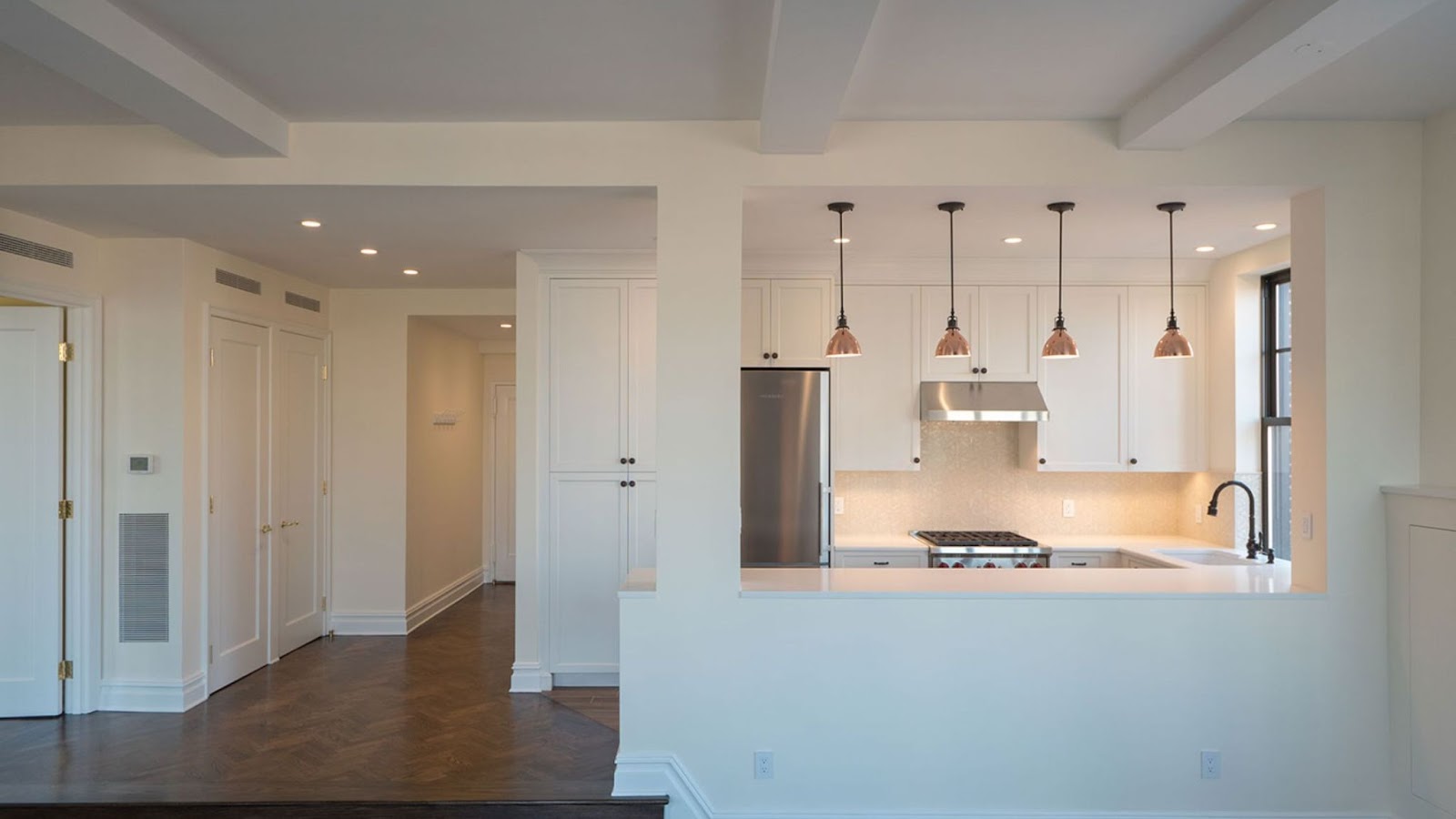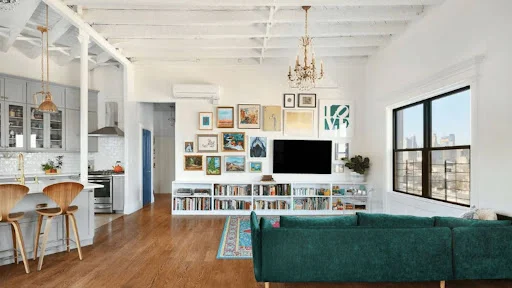Planning a whole-home remodel is a major undertaking that requires careful thought and preparation, especially if you’re hoping to increase your home’s resale value. Whether you’re looking to sell soon or just want to improve your living space, understanding how to plan for maximum return on investment (ROI) is crucial, notes Los Angeles Property Management team.
A well-executed remodel can not only make your home more enjoyable to live in but can also significantly boost its value, attracting future buyers and ensuring a higher selling price.
In this guide, we’ll explore key strategies and tips that will help you plan a successful whole-home remodel. From understanding which areas of your home deliver the highest ROI to choosing the right contractors and materials, we’ll break it down step by step.
By following these steps, you can ensure that every dollar you spend on your remodel works hard to increase the overall value of your property.
Curious for more? Discover related content crafted just for you here!
Understand Your Home’s Value and Potential ROI
Before diving into a home remodel, it’s essential to understand your home’s current value and how the changes you make will affect your return on investment (ROI). The right remodel can significantly increase your home’s market value, but a strategic approach is key. By assessing your home’s worth and focusing on high-value areas, such as kitchens, bathrooms, or curb appeal, you can ensure that the money you invest will yield the best return.
Whether you’re renovating for resale or personal enjoyment, working with experts in complete home remodel Manhattan can help guide you in making smart, value-boosting decisions that pay off in the long run.
Assessing Your Home’s Current Value
Start by finding out how much your home is worth today. This gives you a clear starting point to understand the impact of any remodel. You can use online tools like real estate websites or, better yet, hire a professional appraiser to get an accurate valuation. Understanding your home’s current value helps you set realistic expectations for the ROI of your remodel.
Focus on High-ROI Areas
Certain areas of your home offer higher returns on investment than others. For example, the kitchen, bathrooms, and living spaces are usually the best places to invest in. These areas have a high impact on the overall appeal of your home and can influence a buyer’s decision.
When remodeling, focus on improvements that will make these areas more functional and modern, such as upgrading appliances, adding more storage, or redoing flooring.
Researching Local Real Estate Trends
To make the best decisions for your remodel, it’s important to understand the local real estate market. Find out what buyers in your area are looking for. This can guide you in choosing the right upgrades that will attract potential buyers. If you’re planning to sell, tailoring your remodel to suit local preferences can boost your ROI and make your home stand out.
Set a Realistic Budget and Timeline
Setting a realistic budget and timeline is one of the most crucial steps when planning a home remodel. Without proper financial planning, it’s easy to overspend or face unexpected costs that can delay the project. By establishing clear guidelines for both your budget and timeline from the start, you can stay on track and ensure that your remodel stays within your means.
A skilled general contractors Manhattan can help you establish a practical budget and realistic timeline, and guide you through the entire process, ensuring everything runs smoothly and according to plan.
Determine Your Budget
Before you start any work, it’s important to figure out how much you’re willing to spend on the remodel. Start by evaluating your finances and deciding how much you can afford without straining your budget. A good rule of thumb is to spend no more than 15-20% of your home’s value on a remodel, especially if you’re looking to sell soon. This ensures that the remodel increases your home’s value without overshooting the cost of your investment.
Keep in mind that remodeling costs can vary greatly depending on the size of your home and the scope of the work. Consider everything; materials, labor, permits, and unexpected costs. Setting aside a contingency fund of 10-15% of your total budget can help you manage any surprises along the way.
Establish a Timeline
Once you have your budget set, it’s time to think about how long the remodel will take. Establishing a clear timeline helps you manage expectations and stay organized. Start by breaking the project into smaller stages, such as demolition, construction, and finishing. Assign deadlines to each phase so that you can track progress and avoid unnecessary delays.
Remember, while it’s tempting to rush a remodel, quality work takes time. Be realistic about how long each task will take, and leave room for any unexpected delays. Setting a reasonable timeline ensures the project is completed efficiently without sacrificing quality.
By sticking to a budget and timeline, you’ll stay in control of the remodel and avoid stress or financial strain. These two steps are the foundation of a successful project and will help ensure that your remodel adds value to your home.
Choose the Right Contractors and Materials

Selecting the right contractors and materials for your remodel can make all the difference in ensuring a successful project. A well-chosen contractor and high-quality materials will not only improve the look of your home but also enhance its value. Making informed decisions in this area will save you time, money, and frustration down the road.
Finding the Right Contractors
The first step in choosing the right contractor is doing your research. Look for contractors with a good reputation, proven experience, and strong reviews from past clients. It’s important to hire professionals who specialize in the type of remodel you’re planning, whether it’s a kitchen renovation or a whole-home makeover.
To make sure you’re getting the best deal, get at least three estimates from different contractors, and don’t be afraid to ask questions about their previous projects and process.
Be sure to check their credentials. Verify that they are licensed, insured, and bonded. This ensures that they are qualified to do the work and that you’re protected if anything goes wrong. Always ask for references and check reviews online to see how satisfied previous clients were with their work.
Choosing Quality Materials
When it comes to materials, don’t be tempted to go for the cheapest option. While you can save money by choosing cost-effective materials, it’s essential to strike a balance between quality and affordability. Higher-quality materials can last longer and add more value to your home, which is crucial for a good ROI.
For example, investing in durable countertops or energy-efficient appliances can make a big difference, especially in high-traffic areas like the kitchen or bathrooms. Look for materials that are not only visually appealing but also functional and long-lasting. Consider factors like maintenance, durability, and how well they’ll hold up over time.
By choosing the right contractor and quality materials, you’ll set yourself up for a successful remodel that adds value to your home. Take the time to research and plan, and you’ll see the benefits of your decisions when the project is complete.
Focus on High-Impact Remodels that Appeal to Buyers
When planning a remodel with the goal of maximizing ROI, it’s essential to focus on high-impact areas that will appeal to future buyers. Not all remodels are created equal, and some projects can bring a higher return than others. By investing in the right spaces and features, you can significantly increase your home’s market value.
Prioritize Kitchen and Bathroom Upgrades
The kitchen and bathrooms are two of the most important areas when it comes to adding value to your home. Buyers often judge a home based on these spaces, and upgrades here can dramatically improve appeal. In the kitchen, consider modernizing appliances, adding energy-efficient features, and upgrading countertops with materials like granite or quartz. A fresh coat of paint, new cabinets, or updated lighting fixtures can also make the space feel more contemporary.
For bathrooms, focus on making them feel clean, modern, and functional. Upgrading old fixtures, installing new tile, or replacing a dated vanity can have a big impact. Adding features like a double vanity or a walk-in shower can appeal to buyers looking for added convenience and luxury. Even small changes, like new faucets or updated mirrors, can give the space a refreshed look without breaking the bank.
Open Up the Living Space
Another remodeling trend that attracts buyers is creating an open, airy living space. An open floor plan makes a home feel larger and more inviting, which is appealing to many buyers. If your home has a closed-off layout, consider removing non-structural walls or adding larger windows to bring in more natural light. Even small changes, like rearranging furniture or expanding a doorway, can help open up a space and make it feel more welcoming.
Energy-Efficient Features
In today’s market, buyers are increasingly looking for homes that are energy-efficient. Adding green features to your remodel can boost appeal while lowering utility bills for potential buyers. Consider installing energy-efficient windows, upgrading insulation, or adding smart home features like programmable thermostats or LED lighting. These upgrades not only help save money but also show that your home is modern and environmentally conscious.
Focusing on high-impact remodels is a smart strategy for increasing your home’s value. By prioritizing key areas like the kitchen, bathrooms, and living spaces, and adding energy-efficient upgrades, you can make your home more attractive to buyers and enjoy a higher return on investment when you sell.
Conclusion
Successfully planning a whole-home remodel with ROI in mind doesn’t have to be overwhelming. By focusing on high-impact areas, sticking to a realistic budget, and choosing the right materials, you can boost your home’s value significantly.
Highlighted just for you—dive into our featured post and get inspired!






